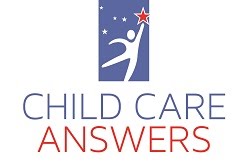Limit the heat and the sun, but not the fun
WASHINGTON – The Environmental Protection Agency (EPA) is providing tips to protect people from the dangers of overexposure to the sun and heat while still enjoying summer activities. Excessive heat and ultraviolet
(UV) radiation are dangerous to people’s health. Each year, more people on average die in the U.S. from heat waves than from any other natural disaster. And every hour, one American dies from skin cancer, which is the most common cancer in the U.S.
During the summer months, days are longer and more people are outside for longer periods of time, increasing the health risks from heat exhaustion and overexposure to the sun. Cities and suburbs are particularly vulnerable to higher temperatures during the summer. Many cities and suburbs have air temperatures that can be up to 22 degrees Fahrenheit warmer than the surrounding countryside. Buildings and roads intensify heat and UV dangers as they absorb the sun’s rays and radiate the heat back throughout the day and night, known as the heat island effect. Heat islands can intensify heat waves. To help reduce the heat island effect, plant trees, shrubs, and vines, which create shade and protect people from UV radiation.
To avoid heat exhaustion and overexposure to the sun, follow these steps to stay cool and safe this summer:
1. Stay hydrated.
2. Wear lightweight clothing. To keep your body temperature down and
stay protected from UV radiation, wear lightweight, light-colored,
and loose-fitting clothing.
3. Apply sunscreen. Approximately 30 minutes before heading outside,
apply SPF 15 or higher sunscreen, and reapply every two hours.
4. Protect your eyes and face. Wear a wide-brimmed hat and sunglasses
to protect your eyes from sun damage and the development of
cataracts.
5. Seek shade. Find shade during the sun’s peak hours between 10 a.m.
and 4 p.m. to reduce the risk of too much sun exposure
6. Teach sun and heat safety. Keep an eye on others, particularly the
elderly, remind them to be safe in the sun and the heat. Watch for
signs of heat illnesses, which can include hot and dry skin,
confusion, hallucinations, and aggression.
7. Check the UV Index. When planning outdoor activities check the UV
Index to identify the times that pose the greatest risk for
overexposure to the sun.
8. Check the Air Quality Index. On hot summer days, ozone levels can
rise making the air unhealthy to breathe so be sure to check the
air quality index before heading outside.
More information on how to reduce the heat island effect:
http://www.epa.gov/heatisland/
More information on extreme heat events:
http://www.blogger.com/goog_607678867
More information on sun safety tips:
http://www.epa.gov/sunwise.
Check the UV index:
http://www.epa.gov/sunwise/uvindex.html
Check the Air Quality Index:
http://www.airnow.gov/
5 years ago









No comments:
Post a Comment